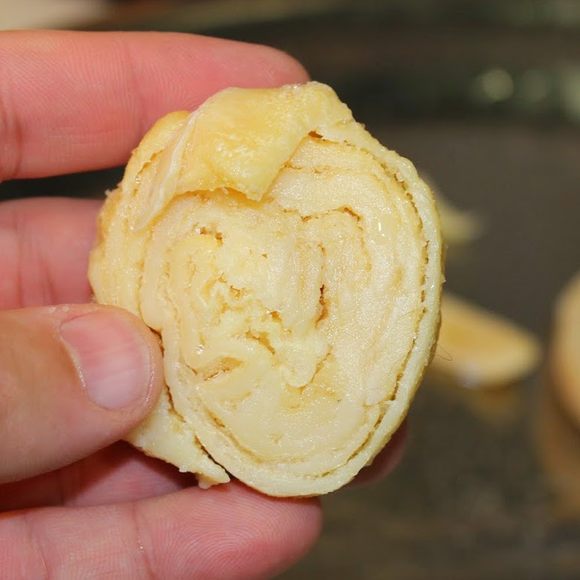Meats & Animal Products
Sagí
Rancid pork fat infuses Catalan cuisine with a blend of gamey, sour, and spicy flavors.
If you want to make a meal in the traditional Catalan fashion, you’re going to need to achieve a unique balance of flavors. Many of the region’s typical dishes are slightly spicy, sour, and gamey, a complex flavor profile that has gone out of fashion over the years. Often, the secret to this blend is a magic ingredient known as sagí.
Sagí is pork “leaf lard,” the highest grade of fat, normally taken from the meat around the pig’s kidneys or loin. It is rendered, salted, and left to dry until it turns yellow and rancid, becoming sagí ranci (literally “rancid lard”). Only when the sagí is suitably pungent will you be ready to cook with it.
Catalan chefs use flour-coated balls of sagí to infuse soups and stews with traditionally intense flavors. The sagí aromas leach into the broth as it slow-cooks, leaving behind a pleasant acridness and meaty mouthfeel. A popular use of sagí is in bullinada, a thick stew of fish and potatoes. In Galicia, on the opposite side of the northern Iberian Peninsula, sagí bears a smokier aroma and flavors broths of spinach, turnip greens, and trout.
A fresher, sweeter version of leaf lard (sagí dolç) is also commonly used in the preparation of cakes and biscuits, making them delightfully flaky and buttery. In Mallorca, saïm (a word used fairly interchangeably with sagí) is the key ingredient in the island’s iconic swirled pastries, ensaïmades.
Written By
 JamesRUDD
JamesRUDD
Sources
- www.fondazioneslowfood.com/en/ark-of-taste-slow-food/sagi/
- www.thespruce.com/what-is-leaf-lard-2216904
- blocs.mesvilaweb.cat/jaumefabrega/?p=268007
- www.spain.info/en/que-quieres/gastronomia/cocina-regional/cataluna/cataluna.html
- anglophone-direct.com/els-focs-de-la-sant-jean/
- www.npr.org/sections/thesalt/2016/10/14/495969636/ensa-mada-symbol-of-the-balearic-islands-and-summer-vacation
- books.google.com/books?id=USww5u0qztcC&pg=PA63&dq=sag%C3%AD+pork+lard&hl=en&sa=X&ved=0ahUKEwjKuJe2ipzaAhXCwVkKHaf-ByEQ6AEIJzAA#v=onepage&q=sag%C3%AD%20pork%20lard&f=false
- www.slowfood.com/top-rank/











